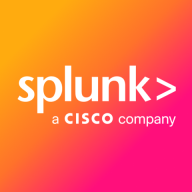

Splunk AppDynamics and Splunk ITSI compete in the application performance management and IT service intelligence categories, respectively. Splunk AppDynamics stands out in detailed transaction tracing and monitoring across different environments, while Splunk ITSI excels in metric aggregation and customizable dashboards, giving it a slight edge for visualization needs.
Features: Splunk AppDynamics offers detailed transaction tracing, application flow maps, and deep-dive diagnostics, allowing users to monitor environments like Dev, QA, and Prod seamlessly. Splunk ITSI provides metric aggregation, flexible KPIs, and comprehensive dashboards such as glass tables, making it highly valuable for visualization and service analyzers.
Room for Improvement: Splunk AppDynamics users suggest enhancements in network monitoring integration, dashboard customization, and async call tracking. Splunk ITSI users desire improvements in predictive analytics for longer periods, smoother microservices integration, and advancements in machine learning algorithms.
Ease of Deployment and Customer Service: Splunk AppDynamics is noted for strong, responsive support and knowledgeable personnel, though some delays are reported. It supports public, hybrid, and private cloud infrastructures well. Splunk ITSI is praised for effective customer service, with some challenges in cloud-based support dynamics, but overall, both solutions highlight the need for good technical support during deployment.
Pricing and ROI: Both products are premium solutions with high costs. Splunk AppDynamics is known for an expensive and complex module-based licensing structure, yet provides significant ROI by improving application monitoring and reducing resolution times. Splunk ITSI, while pricey, offers robust data ingestion and unique capabilities, with users seeking more flexible pricing. Both justify costs through improved operational efficiency, but pricing is a significant factor for budget-conscious businesses.
AppDynamics is much more helpful.
The customer service and support are helpful and responsive.
The technical support is excellent, and I would rate it at ten.
We have reached maximum capacity in our tier, and extending capacity has not been cost-effective from Splunk's perspective.
I did not find any Docker solution available with it, and a separate instance has to be installed.
Splunk is highly scalable, with the ability to expand efficiently.
It is necessary to conduct appropriate testing before deploying them in production to prevent potential outages.
I can rate it nine out of ten.
The setup, however, must be done correctly as incorrect deployment can lead to issues.
Splunk AppDynamics provides an end-to-end view of the application but misses the infrastructure part, which is crucial.
A good integration with Splunk would be very interesting, as Splunk is a good product for logs, and that part is currently missing in Splunk AppDynamics.
If AppDynamics could develop a means to monitor without an agent, it could significantly improve application performance and reduce potential problems.
Splunk ITSI could benefit from including more features that other solutions support, such as vulnerability management modules.
Customers have to pay a premium price, however, they receive considerable value from the product.
All these solutions at the moment are cheap, but it is like paying for insurance; you pay insurance to avoid major damage.
Splunk ITSI tends to be more expensive compared to some open-source solutions.
What I like the most about Splunk AppDynamics is the end-to-end observability for the application, along with traces.
The baseline of all metrics in the Splunk AppDynamics database is very interesting. It can send alarms or alerts when the database baseline is not correct.
The feature that I appreciate in AppDynamics Browser Real-User Monitoring is the intuitive and user-friendly dynamic mapping it creates for workflows.
Splunk ITSI allows for integration with threat intelligence, enabling my organization to correlate more than two events for generating alerts.


Splunk AppDynamics enhances application performance monitoring with advanced diagnostics and real-time insights, offering seamless end-to-end transaction tracking and infrastructure visibility.
AppDynamics provides critical tools for businesses to analyze application behavior and performance. Through innovative features like transaction snapshot analysis and adaptable dashboards, users can quickly identify and address issues, ensuring high levels of system uptime and efficiency. It is designed to support complex environments including Kubernetes and AWS, enhancing user experience by detecting performance issues early. Despite needing improvements in network monitoring and integration, it remains a robust option for tracking application health.
What are the key features of AppDynamics?In industries like financial services and e-commerce, AppDynamics facilitates performance tracking across distributed systems, optimizing infrastructure to meet consumer demands. It excels in environments needing precise transaction monitoring and is pivotal in delivering high value and satisfaction.
Splunk IT Service Intelligence (ITSI) is a powerful analytics-driven monitoring and analytics solution that provides real-time insights into the health and performance of IT services.
It enables organizations to proactively identify and resolve issues, optimize service delivery, and improve overall IT operations. With its advanced machine learning capabilities, ITSI automatically detects anomalies, predicts future events, and prioritizes alerts based on business impact.
The solution offers a centralized view of IT services, allowing users to visualize and analyze data from multiple sources in a single dashboard. ITSI also provides customizable KPIs, service-level agreements (SLAs), and key performance indicators (KPIs) to measure and track service performance.
With its intuitive interface and powerful analytics capabilities, Splunk ITSI empowers IT teams to deliver reliable and efficient services, ensuring maximum uptime and customer satisfaction.
We monitor all Application Performance Monitoring (APM) and Observability reviews to prevent fraudulent reviews and keep review quality high. We do not post reviews by company employees or direct competitors. We validate each review for authenticity via cross-reference with LinkedIn, and personal follow-up with the reviewer when necessary.